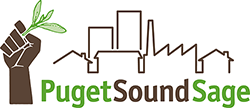It is not a coincidence that Southeast Seattle has the greatest incidence of people with low incomes and possesses the highest poverty rate in the city. In Southeast Seattle, affordable housing and quality jobs are increasingly hard to find for low-income people and families, who are disproportionately people of color, immigrants, and refugees as a result of the history of segregation. However, the face of Southeast Seattle, and the country, is changing. As of 2012, a majority of the nation’s infants were people of color, which now puts the white population of the country in the minority.

Currently, Seattle is the fastest growing city in the country – average rents have increased even more dramatically in the past year and the trend does not show signs of slowing. Demographic changes in Southeast Seattle and South King County indicate that people of color have been displaced from their communities as the cost of living in Seattle has become unsustainable for them. As a result, low-income communities and communities of color are relocating to resource-poor suburbs while a largely white and wealthier population remains in Seattle. This segregative effect in major metropolitan areas are deepening racial disparities in this city – disparities we have long sought to change.
However, smart planning, policy and investments in the community can mitigate or even reverse this trend. The opposite of gentrification-fueled displacement is “prospering in place” – where low-income people and families can afford to stay where they are, access the region’s economic opportunities and deepen cultural roots in their existing communities.
Low-income communities and communities of color in Seattle have known this far too long and all too well. This past fall, approximately fifty people participated in a convening and survey through the city-sponsored, community-led equitable-development-focused Community Cornerstones program. Six multi-cultural coalitions, two foundations, four business associations and eight city staff from five departments were convened to share equitable development plans and accomplishments, deepen collaborative relationships and explore opportunities to coordinate ongoing efforts.
Through synthesis of the surveys and convening notes from community coalition participants, several overarching themes emerged that Sage was able to connect to project and policy next steps, in a report informed by community.
Themes:
- Growth must be place-based and culturally relevant.
- Cultural anchors and community-supported economic development must be prioritized.
- Government entities need to understand community vision in order to facilitate positive growth and increase capacity to align programs and funding that make those visions happen.
- Community leaders need to be part of decision-making processes.
- Multi-racial, multi-cultural equitable development coalitions have emerged and are currently working directly with the city as a resource. These community organizations must be adequately resourced to take ownership of their vision and actively participate in shaping development.
- Community organizations expressed a desire for regional cohesion, and that organizations be adequately networked, working across cultures and sectors to become more effective, powerful and farsighted. Only then will meaningful change stem displacement and grow significant economic opportunity in the Rainier Valley.
